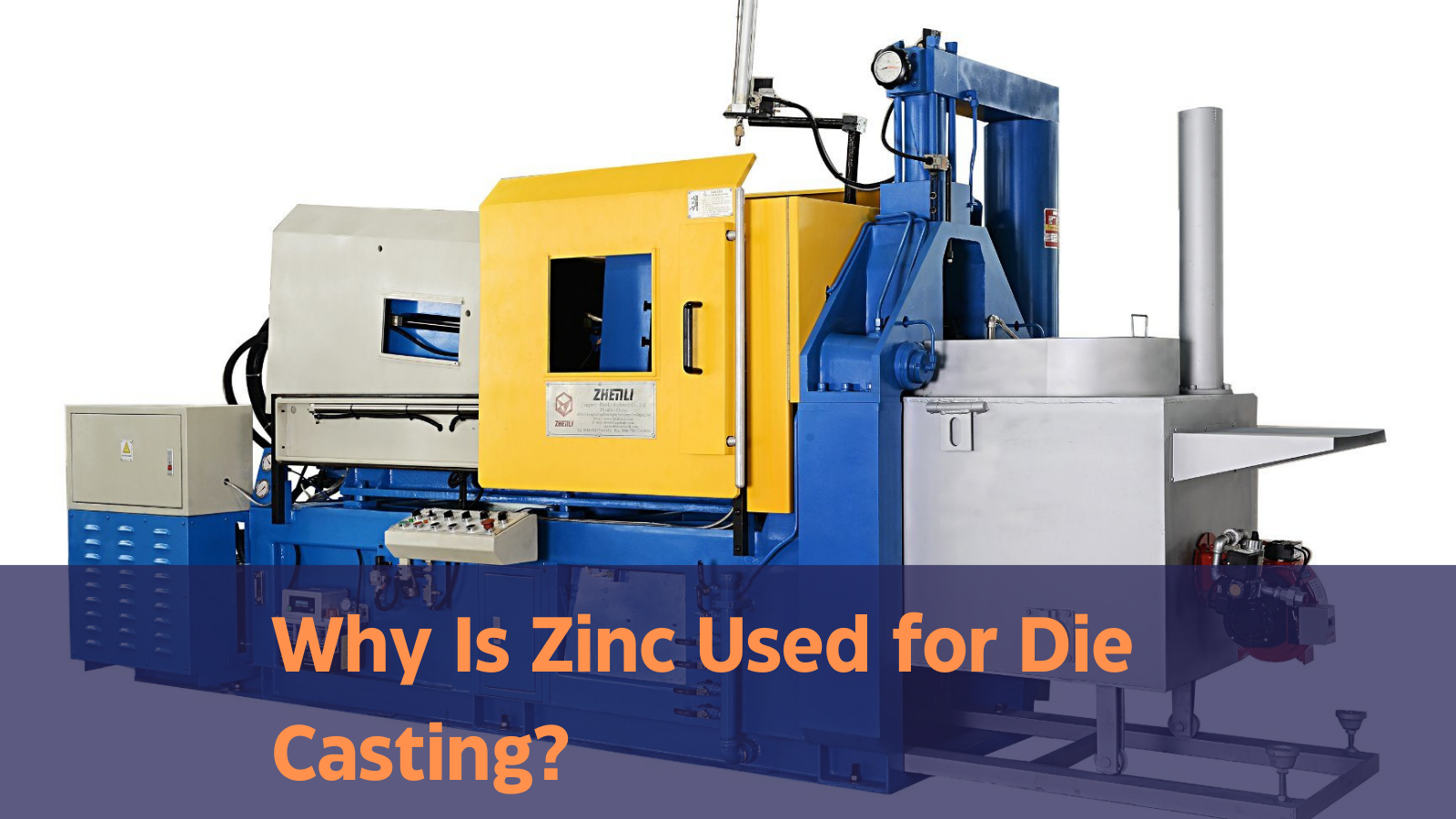Die casting is a widely used manufacturing process for producing metal parts with high precision and efficiency. Among the various materials utilized in this process, zinc is one of the most commonly chosen metals. The preference for zinc in die casting is attributed to its unique properties, which provide numerous advantages in creating high-quality, durable, and cost-effective parts. In this article, we will explore why zinc is used for die casting, highlighting its physical, mechanical, and thermal properties, as well as its benefits across various applications.
Introduction to Die Casting and Zinc
Die casting involves injecting molten metal into a mold cavity under high pressure. This process is ideal for producing complex shapes with tight tolerances, making it a preferred method in industries such as automotive, electronics, and consumer goods. The choice of material in die casting is critical, as it directly impacts the quality and performance of the final product. Zinc, as a die casting material, offers a combination of properties that make it particularly well-suited for this process.
Properties of Zinc That Make It Ideal for Die Casting
a. Physical Properties
High Strength and Hardness: Zinc alloys possess high tensile strength and hardness, making them suitable for producing durable and wear-resistant parts. This strength allows zinc-cast components to withstand mechanical stresses and impacts, making them ideal for applications requiring robust performance.
Excellent Dimensional Stability: Zinc die-cast parts exhibit excellent dimensional stability, meaning they maintain their shape and size over time. This property is crucial for components that must fit precisely with other parts, as it ensures that dimensions remain consistent, reducing the need for post-production adjustments.
Good Corrosion Resistance: Zinc naturally forms a protective oxide layer on its surface, which helps prevent corrosion. This property is particularly advantageous for parts exposed to harsh environments, as it extends the lifespan of the components and reduces maintenance requirements.
b. Mechanical Properties
Low Melting Point: Zinc has a relatively low melting point of 419.5°C (787.1°F). This low melting point is advantageous in die casting because it allows for rapid melting and cooling cycles, increasing production efficiency. Additionally, the low melting point reduces energy consumption during the casting process, contributing to cost savings.
High Fluidity: Zinc alloys exhibit excellent fluidity when molten, allowing the metal to flow easily into intricate mold cavities. This fluidity enables the production of complex shapes and thin-walled sections, which would be challenging to achieve with other metals. The ability to cast detailed features and fine textures enhances the versatility of zinc die casting.
Good Castability: Zinc’s excellent castability means it can be easily shaped and molded into various forms. The metal’s ability to fill molds completely and uniformly results in high-quality castings with minimal defects. This property is essential for producing parts with consistent surface finish and dimensional accuracy.
c. Thermal Properties
Efficient Thermal Conductivity: Zinc alloys have good thermal conductivity, which helps dissipate heat quickly. This property is beneficial in applications where thermal management is critical, such as in electronic components and heat sinks. The efficient heat dissipation prevents overheating and ensures reliable performance.
Low Thermal Expansion: Zinc exhibits low thermal expansion, meaning it does not expand or contract significantly with temperature changes. This property reduces the risk of warping or distortion in die-cast parts, ensuring that they maintain their shape and fit accurately with other components.
Advantages of Using Zinc in Die Casting
a. Cost-Effectiveness
Zinc is an economically viable material for die casting due to its abundance and relatively low cost. The efficient production process, combined with the low melting point and energy savings, makes zinc an attractive choice for large-scale manufacturing. Additionally, zinc’s excellent castability reduces the need for secondary machining operations, further lowering production costs.
b. Versatility in Applications
Zinc die casting is versatile and finds applications in a wide range of industries. In the automotive sector, zinc is used to produce components such as carburetors, fuel pumps, and engine parts, where durability and precision are crucial. In the electronics industry, zinc die-cast housings and enclosures provide excellent electromagnetic shielding and thermal management. The consumer goods industry also benefits from zinc die casting for producing household appliances, hardware, and decorative items.
c. High Production Efficiency
The rapid cooling and solidification of zinc alloys in die casting enable high production rates. This efficiency is particularly advantageous in industries requiring large volumes of parts with consistent quality. The ability to produce complex shapes in a single casting cycle reduces production time and increases throughput, making zinc an ideal material for mass production.
d. Excellent Surface Finish
Zinc die-cast parts typically have a smooth surface finish, which enhances their aesthetic appeal and reduces the need for additional finishing processes. The smooth surface also facilitates easy painting, plating, and coating, providing flexibility in the final appearance of the product. This characteristic is particularly important in consumer goods and decorative applications, where visual appeal is a key consideration.
e. Recyclability and Sustainability
Zinc is a highly recyclable material, making it an environmentally friendly choice for die casting. The recycling process requires less energy than producing new zinc, reducing the overall environmental impact. Furthermore, the durability and long lifespan of zinc die-cast parts contribute to sustainability by reducing the need for frequent replacements.
Comparison with Other Die Casting Materials
a. Zinc vs. Aluminum
While aluminum is also a popular die-casting material, zinc offers several advantages. Zinc’s lower melting point reduces energy consumption and allows for faster production cycles. Additionally, zinc’s superior fluidity and castability enable the production of more intricate and detailed parts. However, aluminum has a higher strength-to-weight ratio, making it preferable for lightweight applications.
b. Zinc vs. Magnesium
Magnesium is another lightweight material used in die casting, offering excellent strength-to-weight ratios. However, zinc provides better corrosion resistance and is easier to cast due to its lower melting point and superior fluidity. Zinc’s density also makes it more suitable for applications where weight is less of a concern, and durability is a priority.
c. Zinc vs. Brass
Brass, an alloy of copper and zinc, is used in die casting for its excellent mechanical properties and corrosion resistance. However, pure zinc and zinc alloys are more cost-effective and easier to cast. Zinc die-cast parts also offer a smoother surface finish and are easier to machine compared to brass.
Challenges and Considerations in Zinc Die Casting
a. Design Considerations
While zinc offers excellent castability, careful consideration must be given to the design of the mold and part geometry. Proper mold design ensures that the molten zinc fills the cavity uniformly and avoids defects such as porosity and incomplete filling. Additionally, designers must account for zinc’s shrinkage during cooling to maintain dimensional accuracy.
b. Material Properties
Although zinc is durable and corrosion-resistant, it may not be suitable for applications requiring extreme heat resistance or mechanical strength. In such cases, alternative materials like aluminum or steel may be more appropriate. Engineers must consider the specific requirements of the application when selecting zinc for die casting.
c. Environmental and Safety Considerations
The die-casting process involves the use of high-pressure equipment and molten metal, which can pose safety risks. Proper safety protocols and protective equipment are essential to prevent accidents and injuries. Additionally, while zinc is recyclable, the casting process can produce waste and emissions. Implementing environmentally responsible practices, such as recycling scrap metal and using energy-efficient equipment, can mitigate these impacts.
Conclusion
Zinc is an ideal material for use in a zinc die casting machine’ due to its unique combination of physical, mechanical, and thermal properties. Its high strength, excellent fluidity, and corrosion resistance make it suitable for a wide range of applications, from automotive parts to consumer goods. Zinc’s cost-effectiveness, recyclability, and high production efficiency further enhance its appeal in the manufacturing industry. The use of zinc in a zinc die casting machine allows for the production of complex, high-quality parts with precise dimensions and excellent surface finishes. While there are challenges and considerations in working with zinc, its advantages make it a preferred choice for many industries. As technology and manufacturing processes continue to evolve, zinc die casting machines will likely remain a crucial technique in producing durable and reliable metal components.


